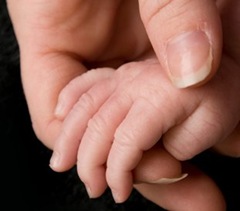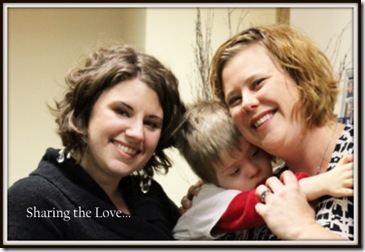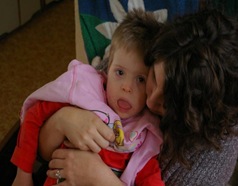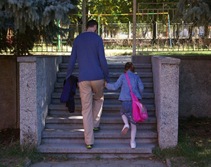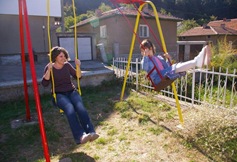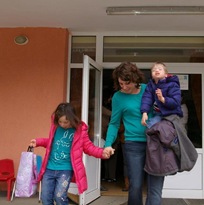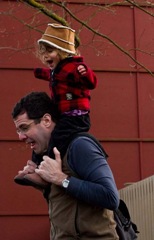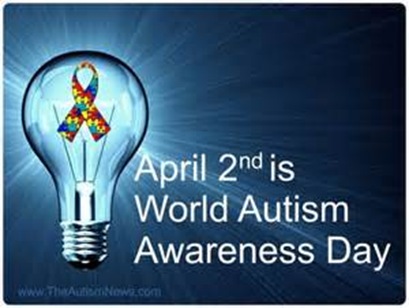 Two amazing kids were granted court decrees in Bulgaria today! Congrats Hopscotch Mom!!!!!
Two amazing kids were granted court decrees in Bulgaria today! Congrats Hopscotch Mom!!!!!
Monday, April 29, 2013
Friday, April 26, 2013
Celebrating Bulgaria Adoptive Families Reunion 2013
A letter from the Bulgarian Family Reunion 2013 Co-chair, Yvonne Villemure:
Where in the world did February, March and April go? I was commenting yesterday to Viviane that it felt like it was the beginning of March here in Southeastern Michigan.... maybe that is because of our cold and crummy weather... we are just this week having a solid week in the 50's... just yesterday I had to scrape a frosty snow layer off my car. I want to cry... it is just not far to be so cold for so long!!!! I am over cabin fever and ready for our camping weekend!! Maybe we will be fortunate that June will prove to be a beautiful balmy month and not quite the sauna from the past two years. :)
So Topics of today-
1. FEES- The deadline for Reunion fees is May 1st. Please keep this in mind. I am open to Paypal or checks in the mail... whichever is easier. I can tell you guys that Viviane and I cannot move forward right now until the fees are in. We are dead in the water (because we have received a limited # of fees) so please get them in so we can make this a successful event!! If you have sent your fees, thank you! If you haven't please, please send them today!
2. FORMS- Thank you to those of you that have sent me your forms either in the mail with your payment or electronically. These forms help us immensely.... if you haven't signed up for a potluck item, let me know and I will give you a few ideas of what may still be needed.... pretty sure we still need hotdogs and hamburgers! (Hotdogs, hamburgers, smoked pork and buns are now covered though it would help with costs if another family or two would sign up for hamburgers. If anyone wants to bring chicken, please remember to pre-cook it. We could use another green salad - Yvonne is making shopska- and possibly a tray of hamburger/hotdog fixings like tomatoes, lettuce, onions, pickles, and condiments.)
3. T-SHIRTS- We will be ordering the shirts earlier this year, the past two years we have cut the deadline close. In the past 2 years I have allowed people to order t-shirts almost up until the week of the reunion... I am ordering the t-shirts the first week of May. This means that I need the t-shirt sizes ASAP... send me your forms so I can organize this!
***NOTE: If you are a family that is still waiting for travel dates and are putting off sending fees, please contact me ASAP so that we can work out the t-shirt order. I can always ship your t-shirts to you if you are unable to attend. But I would really hate for anyone to not have the reunion shirt for our pictures! BTW, I will not be ordering extra t-shirts this year. Last year I ordered extra and we still have a few left. If you are interested in purchasing a 2012 t-shirt for $5, please e-mail Viviane viviane8@yahoo.com for the sizes that are left! ***
News from Ghana (and Detroit Lions!)
Lions take BYU DE Ansah of Ghana No. 5 in draft
 ALLEN PARK, Mich. (AP) - Ziggy Ansah was born and raised in Ghana, playing soccer and shooting hoops without ever seeing a snap of football.
ALLEN PARK, Mich. (AP) - Ziggy Ansah was born and raised in Ghana, playing soccer and shooting hoops without ever seeing a snap of football.
When he moved to the United States in 2008, some missionaries suggested he attend Brigham Young and try out for the basketball team. He fell short there, but was willing to listen again when friends persuaded him to play football for the first time in 2010.
It has paid off and then some: On Thursday night, the Detroit Lions made him the No. 5 overall draft pick.
"It's been a humbling experience,'' Ansah said with a thick accent on a conference call with Detroit-area reporters. "A crazy journey.''
What if someone told him a few years ago he would end up being drafted fifth overall in 2013?
"I would be like, `I don't know what you're thinking,''' Ansah said.
If Ansah doesn't play up to his potential, some people may be saying the same thing about the gamble the Lions took with an inexperienced player.
Detroit desperately needed an offensive tackle, but three were drafted within the first four picks. The franchise's decision-makers knew they also had a glaring void at defensive end. Instead of trading down to acquire additional picks, the Lions stuck with their slot and took a player they evaluated up close for a week at the Senior Bowl.
"He's the best player available,'' Lions general manager Martin Mayhew said. "And, he fills a need. This was an opportunity where the grade matched up with the need and it worked out great for us.''
Detroit didn't re-sign defensive end Cliff Avril, who joined Seattle in free agency, and cut its other starting defensive end, Kyle Vanden Bosch, from last year's 4-12 team.
The Lions' poor season put them in a position to coach a team at the Senior Bowl and they took advantage, getting to know an intriguing player in a way no other team in the league could've this offseason.
It eased any concern Mayhew had about a player very new to the game.
"If we didn't have the opportunity to coach him at the Senior Bowl, that would have been a bigger issue,'' Mayhew said. "But we had the opportunity to work with him and teach him and we saw the way that he could learn, how quickly he picks things up and we saw the impact that he had in the game so we felt very comfortable with him.''
Ansah, whose first name is Ezekiel, didn't know how to put on shoulder pads just three years ago.
"He had no idea,'' BYU center Braden Hansen recalled last season.
Slowly, he turned himself into a player widely expected to be among the first chosen Thursday night - and he was soon after Detroit was on the clock.
Now, the 6-foot-5, 271-pound Ansah has got a great shot to start on an NFL team.
"We didn't draft him to be a project,'' Detroit coach Jim Schwartz said.
Ansah should be able to benefit from playing alongside one of the league's best tandem of defensive tackles - Ndamukong Suh and Nick Fairley - that will put him in one-one-situations when he's trying to sack quarterbacks.
"I just can't wait to be a part of that line,'' Ansah said.
Ansah's athletic ability could create mismatches that Detroit's shaky defense needs next season.
He ran the 40-yard dash in 4.63 seconds at the NFL Combine and had a 34.5-inch vertical leap. In track at BYU, he ran the 200-meter dash in less than 22 seconds and had a sub-11-second 100-meter dash.
"Phenomenal, phenomenal athlete,'' Mayhew said.
Impressive person, too.
The actuarial science major, the youngest of five children, speaks two Ghanaian dialects and hopes his unique path inspires an entire continent .
"One thing I want to do is just to be an ambassador with the NFL and bring the game back to Ghana because I know that there are little kids back home that are going to be pretty good at this game,'' Ansah said. "I can try to introduce the game to the people in Africa.''
Source: sportsillustrated.cnn.com
News from Armenia
Tuesday, April 23, 2013
Genocide in Armenia
News From Ghana
Meet the Author of "The Sandcastle Girls"
Friday, April 26 @ 7:30 PM
Where? St. Sahag & St. Mesrob Armenian Apostolic Church
630 Clothier Road
Wynnewood, PA 19096
Adults $20 in advance $25 at door; Students $10
Robin Sizemore shared, "I've read all of Chris Bohjalian's books and was thrilled to finally have a book that draws upon his own history. If you have not read the book, I would highly recommend it to anyone interested in learning more about the Armenian genocide or simply loves a story with lots of twists!"
The Sandcastle Girls is a sweeping historical love story steeped in Chris Bohjalian's Armenian heritage.
When Elizabeth Endicott arrives in Aleppo, Syria she has a diploma from Mount Holyoke, a crash course in nursing, and only the most basic grasp of the Armenian language. The year is 1915 and she has volunteered on behalf of the Boston-based Friends of Armenia to help deliver food and medical aid to refugees of the Armenian genocide. There Elizabeth becomes friendly with Armen, a young Armenian engineer who has already lost his wife and infant daughter. When Armen leaves Aleppo and travels south into Egypt to join the British army, he begins to write Elizabeth letters, and comes to realize that he has fallen in love with the wealthy, young American woman who is so different from the wife he lost. Fast forward to the present day, where we meet Laura Petrosian, a novelist living in suburban New York. Although her grandparents' ornate Pelham home was affectionately nicknamed "The Ottoman Annex," Laura has never really given her Armenian heritage much thought. But when an old friend calls, claiming to have seen a newspaper photo of Laura's grandmother promoting an exhibit at a Boston museum, Laura embarks on a journey back through her family's history that reveals love, loss - and a wrenching secret that has been buried for generations.
Monday, April 22, 2013
Adoption Agency Helps Family Feel Complete
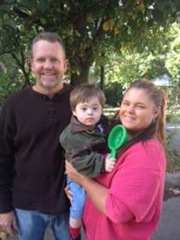 Lisa and Ronnie Bassett had five children, but the family did not feel quite complete.
Lisa and Ronnie Bassett had five children, but the family did not feel quite complete.Because they had a 3-year-old, Chase, with Down syndrome, they decided to adopt another child with Down syndrome.
Lisa Bassett looked online for a local adoption agency that offers Down syndrome children.
She found Hopscotch Adoptions, a nonprofit, international adoption agency authorized in New York and licensed in North Carolina. It helps children in need of families become part of permanent, loving homes. On the Hopscotch website, Lisa Bassett found a picture of Davit, a little boy from Armenia, and knew she had found her child, she said.
Last February, Lisa and Ronnie Bassett went to the High Point office of Hopscotch Adoptions and started the process that took one year to complete.
“As soon as we walked into the office, everyone was so helpful,” Lisa Bassett said. “I just knew that this was the agency for us.”
Robin Sizemore, co-founder of Hopscotch, told the Bassett family that the child they saw on the website might not be available.
But Lisa Bassett said she knew in her heart that he was going to be with them.
Hopscotch facilitates the adoption of infants, toddlers and older children, as well as children with special needs.
It specializes in adoptions from the republics of Armenia and Georgia with new programs in Bulgaria, Ghana and Morocco. When children can no longer safely remain with their birth families or be adopted in their countries of birth, Hopscotch makes it possible for children to be placed internationally with adoptive parents who can provide a nurturing and stable family.
Hopscotch works closely with prospective adoptive families starting from the first visit, telephone call or email. Hopscotch helps families with paperwork and compliance issues.
Lisa and Ronnie Bassett went to Armenia for a week in October and met Davit at the orphanage.
Then Lisa Bassett went back for three weeks, with her mother and husband joining her later.
Hopscotch representatives met them at the airport with an interpreter and took them to an apartment. During these three weeks, they went to court, got a physical for Davit and arranged for his visa and passport. Hopscotch was present at each step in the process.
Throughout the year, Hopscotch prepared them to become adoptive parents. After they got home, Hopscotch provided post-adoption support by visiting at the house and following up with phone contacts.
The process, even when it goes well, is challenging and stressful, Lisa Bassett said, but Hopscotch provided understanding and support.
Davit, 21/2, has been in the Bassett family for six months. He and his brother Chase are “getting along like most brothers,” Lisa Bassett said.
“The Bassett family is just one example of the many terrific families we have had the privilege to work with,” said Sizemore, executive director at Hopscotch.
“Adoption should be entered into as a lifelong commitment.
“It’s one of the most intimate decisions and processes a family will ever make, and we don’t take this lightly. We want the best for these children, and they deserve no less.”
Sizemore has personally helped place more than 350 children into permanent and loving families.
Since its founding in 2006, Hopscotch has assisted more than 170 children.
“Not many people can say they really love their work, but all of us here at Hopscotch certainly do,” Sizemore said. “Seeing children join their families and coming home is the most powerful affirmation of what we do.”
Ruth D. Anderson is executive director of The Servant Leadership School of Greensboro and a member of the program committee of The Guilford Nonprofit Consortium.
Thursday, April 18, 2013
Society for Orphaned Armenian Relief – Los Angeles Chapter (SOAR-LA)
http://www.facebook.com/bared.maronian


http://www.valleypbs.org/events/orphans_genocide.php
http://www.armenoidteam.com
Contact Armenoid Productions at 954-646-0944 or director, Bared Maronian at bared.maronian@gmail.com
Reposted with permission from Bared Maronian.
Tuesday, April 16, 2013
IAC 248 Results
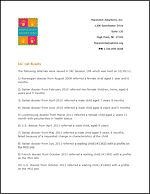 Click here for the April 10, 2013 IAC Results (PDF) including referrals that were issued in IAC Session 248 which was held on March 6, 2013.
Click here for the April 10, 2013 IAC Results (PDF) including referrals that were issued in IAC Session 248 which was held on March 6, 2013.
News from Armenia
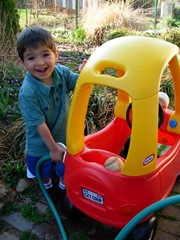 "He is very excited about all the new things he is seeing and doing. He recites the alphabet ("A, B, C, D, E, Akhchig!") and is combining English and Armenian in very interesting ways ("Gnats shopping!")"
"He is very excited about all the new things he is seeing and doing. He recites the alphabet ("A, B, C, D, E, Akhchig!") and is combining English and Armenian in very interesting ways ("Gnats shopping!")"
Hopscotch loves to hear how great the kids are doing... this little guy arrived home recently and continues to delight everyone he meets. Welcome home once again!
Friday, April 12, 2013
Building Protective Factors from Birth to Five
Hopscotch Staff is committed to your family's ongoing success after completing your adoption. Our staff will be attending this conference in May and hope to incorporate more protective factors, strategies and resources into our post adoption services.

Sponsors: Orange County Partnership for Young Children, North Carolina Children’s Trust Fund, Orange County Department of Social Services, and Child Care Services Association
Time and Date: 8:30 to 3:30 Friday, May 31, 2013
Location: William & Ida Friday Center Continuing Education, Chapel Hill
Maximum Number of Participants: 90
Who Should Attend? The training will be applicable to a multidisciplinary group of early childhood professionals and advocates, including mental health providers, child care providers and administrators, early intervention, social services, family support, and others who are concerned with promoting social emotional development in children birth through five.
Description: Recent research has made it increasingly clear that adverse experiences during the period of birth to five years have an enduring impact on the developing brain and body. However, family protective factors have the capacity to buffer these harmful effects. The morning session will provide an overview of what the American Academy of Pediatrics terms “toxic stress,” as well as five family protective factors. We will then hear about an initiative of the North Carolina Children’s Trust Fund to bolster family protective factors in very high risk families, highlighting methods for engaging such families. Participants will receive the newest version of Orange County Smart Start’s community resource guide – Parent Pages.
Participants can network during a complimentary buffet lunch, then for the afternoon session we will divide into two tracks: 1) mental health, and 2) early education. Each group will hear about four separate evidence-based or evidence-informed interventions for building protective factors and promoting social emotional skills and coping in early childhood.
Objectives: The primary participant objectives for this presentation are to:
- Understand three different kinds of stress (positive, tolerable, and toxic) and how each affects the developing child’s brain and body
- List and describe five Family Protective Factors
- Apply specific techniques for successfully engaging high risk families
- Use a local resource guide to identify community services that support families
- Identify and know how to access information about at least four evidence-based interventions for work with young children and their families through 1) mental health, or 2) early education.


Special Offer from Adoptive Families Magazine
 Get a FREE ISSUE of Adoptive Families, the best resource for families before and after adoption!
Get a FREE ISSUE of Adoptive Families, the best resource for families before and after adoption!
As a subscriber, you'll get full digital access and be able to read each issue on your tablet, smartphone, web browser, and in print.
PLUS, get 2 bonus gifts, Positive Adoption Conversations and Bonding with Your Baby After Adoption , available as FREE instant downloads right after you subscribe.
Adoptive Families is the only magazine that addresses the joys and challenges of being an adoptive parent. That's why I'm pleased to offer you 2 free bonus gifts when you subscribe today.
In each issue, you'll find the information you need to successfully adopt and parent your child. Enjoy personal stories, expert advice, and so much more! Claim your free issue now.
Once you do, you'll be able to instantly download your gift, and save up to 58% off the cover price!
![]()
Susan Caughman
Publisher of Adoptive Families
“STUCK”—The Unnecessary Pains of International Adoption!
 The international adoption process pushes so many people away with inter-country politics, excessive costs and red tape, and sometimes even unnecessary rejection. Instead of pushing people away from adopting orphans, we primarily need to be pulling them closer together.
The international adoption process pushes so many people away with inter-country politics, excessive costs and red tape, and sometimes even unnecessary rejection. Instead of pushing people away from adopting orphans, we primarily need to be pulling them closer together.
I recently made the Jewish case for promoting adoption and have previously shown the deep roots of this commitment. We need to create a much larger Jewish discourse about our role in responding to the global orphan crisis. The longer these children stay in orphanages the more risk of their suffering irreparable emotional, neurological, psychological, and educational damage.
 I recently watched the must-see award-winning film, STUCK, by Both Ends Burning, which documents the struggles and rewards of international adoption. This very well done documentary follows the stories of four orphans from Ethiopia, Vietnam, and Haiti, and their heartbreaking struggles to make it home to their adoptive families.
I recently watched the must-see award-winning film, STUCK, by Both Ends Burning, which documents the struggles and rewards of international adoption. This very well done documentary follows the stories of four orphans from Ethiopia, Vietnam, and Haiti, and their heartbreaking struggles to make it home to their adoptive families.
The subjects of the documentary are just four examples of millions of children around the world who are stuck in a broken system, and the growing outcry in the international community is that every child must be granted the right to grow up in a loving family. We must become more aware and outraged by the incredible obstacles placed in the way of people who are only trying to become parents, and the children who desperately want to have a family. There are an estimated 17.9 children worldwide who have no living parents. This is probably a low estimate, as UNESCO data indicate that there are up to 150 million street children who spend their days in the streets of Latin America, India, Eastern Europe, and other areas. Some have families to return to at night, some have homes to sleep in, but millions literally live and sleep on the streets. In Latin America, they are called “los abandonados” (the abandoned ones), and many spend their days sniffing glue or paint thinner in an effort to get high and forget their hunger pangs. They are also subject to abuse by pedophiles and at risk of being intimidated and even murdered by the police, with little chance of obtaining justice. The idea that many of these children have families that can provide for them is a cruel exaggeration.
For years, liberal adoption policies allowed many Americans to have inter-country adoptions. The U. S. State Department reported that there were 233,934 total adoptions from 1999-2011, an average of about 18,000 a year. However, as the following list shows, the number of international adoptions has declined greatly in recent years.
- 2002: 21,467
- 2003: 21,654
- 2004: 22,991
- 2005: 22,734
- 2006: 20,680
- 2007: 19,608
- 2008: 17,456
- 2009: 12,744
- 2010: 11,058
- 2011: 9,319
- 2012: 8,668
The following factors should be noted:
- Due to increasingly difficult regulations, the number of adoptions to the United States has decreased by 62 percent.
- A 2012 State Department report noted that adoption service providers charged between $0 and $64,357 for all services, with a median charge of $28,425. The median wait takes 896 days; some adoptions have been held up for years due to bureaucratic obstacles.
- Current models predict that there will be even fewer adoptions in 2013, due to the Russian orphan ban. In addition, the State Department is not accepting applications from Cambodia and Guatemala.
STUCK is a film designed to raise awareness—and inspire outrage—over the deplorable practices allowed in current international adoption. Politics, inefficiency, and apathy leave children trapped and uncared for in orphanages around the world while there are loving families eager and willing to adopt them.
I would encourage others to watch the film, to consider volunteering to be part of the STUCK team when the film comes to your city, sign the petition, join the National March for Orphans in Washington, DC, on May 17th. When we raise our voices and advocate the voices of millions of children, we can make great change.
 Counterintuitively the Skulener Rebbe taught that one should even show more care to an orphan than to their own children. The Rebbe stayed in Europe after World War II defying the Soviets to look after refugees and keep orphans in his home. On one cold night, he found an orphan on his floor crying without a blanket. He went and took the blanket off of his old child and gave it to the orphan child. His son understood but nonetheless the Skulener Rebbe said “My dear son, please understand. You have a father. You can at least warm yourself with that. That child has no one in the world; let him at least have a blanket.”
Counterintuitively the Skulener Rebbe taught that one should even show more care to an orphan than to their own children. The Rebbe stayed in Europe after World War II defying the Soviets to look after refugees and keep orphans in his home. On one cold night, he found an orphan on his floor crying without a blanket. He went and took the blanket off of his old child and gave it to the orphan child. His son understood but nonetheless the Skulener Rebbe said “My dear son, please understand. You have a father. You can at least warm yourself with that. That child has no one in the world; let him at least have a blanket.”
May we open our hearts to the orphans of the world crying out for homes and for love.
Rabbi Shmuly Yanklowitz is the Founder and President of Uri L’Tzedek, the Senior Rabbi at Kehilath Israel, the Founder and C.E.O. of The Shamayim V’Aretz Institute and is the author of “Jewish Ethics & Social Justice: A Guide for the 21st Century.” In 2012 and 2013, Newsweek named Rav Shmuly one of the top 50 rabbis in America.”
Source: http://blogs.timesofisrael.com
Thursday, April 11, 2013
The Sparrow Fund
 Thousands of U.S. families adopt internationally each year. The Sparrow Fund is an organization committed to encouraging and supporting these families in the adventure of adoption. They do this by providing regular training opportunities as well as grants to families in financial need to enroll in programs specifically designed to provide counsel and comprehensive medical reviews of their referred child. Check them out!
Thousands of U.S. families adopt internationally each year. The Sparrow Fund is an organization committed to encouraging and supporting these families in the adventure of adoption. They do this by providing regular training opportunities as well as grants to families in financial need to enroll in programs specifically designed to provide counsel and comprehensive medical reviews of their referred child. Check them out!
Heart of the Matter Seminars introduces . . . OPENING UP OPEN ADOPTION: What is it and is it for you?
A new course for all adoptive parents and professionals . . .
"An educational program essential for everyone interested in adoption." N.C.
KNOWLEDGE IS POWER!
Give your families the information to succeed with this new two hour course which examines openness from the viewpoints of adoptive parents, birth parents, adoption professionals, and adult adoptees. It addresses both theoretical and practical aspects of openness in adoption with participants exploring what open adoption might look like before and after the adoption, the individual nature of openness, benefits, challenges, and more.
Adoption Tax Credit Working Group Tax Day Campaign
 Dear Adoption Tax Credit Working Group Members,
Dear Adoption Tax Credit Working Group Members,
Tax Day 2013 is just around the corner and this is a perfect time of the year to communicate with Congress about the Adoption Tax Credit. We are encouraging all ATC Working Group members to activate your members, clients, and families, please use the attached letter to urge them to contact their Senators and Representative between Monday, April 15th and April 30. The goal is to convey two simple messages:
1. Thank you for making the Adoption Tax Credit permanent
2. Please re-instate the refundable provision of the Adoption Tax Credit so that it helps more children and adoptive families
We have made this process very simple for you. Attached is a sample letter for you to post and send out for individuals to send to their Members of Congress (MOC). They can find their MOC here: http://www.contactingthecongress.org/
The template letter will also be posted on www.adoptiontaxcredit.org and we will use the “Save the Adoption Tax Credit” Facebook page to promote the letter writing campaign as well.
Thank you for taking action – let’s flood Congress with letters from the adoption community!
With warm regards,
The Adoption Tax Credit Working Group’s Executive Committee
Children Are Waiting to be Adopted and Adoptive Families Thank You! (Word Doc)
Wednesday, April 10, 2013
The Prompt Institute
PROMPT's multidimensional approach to speech production disorders has come to embrace not only the well-known physical-sensory aspects of motor performance, but also its cognitive-linguistic and social-emotional aspects. PROMPT is about integrating all domains and systems towards positive communication outcome. It may be used (with varying intensity and focus) with all speech production disorders from approximately 6 months of age onward. To achieve the best outcome with PROMPT it should not be thought of or used mainly to facilitate oral-motor skills, produce individual sounds/phonemes or as an articulation program but rather as a program to develop motor skill in the development of language for interaction.
Why do you need to use PROMPT?
Almost every clinician will have a caseload that will include a child or adult with a speech production disorder. The delays or disorders may range from stuttering, language formulation, syntax, motor control or planning, phonological or "rule based" learning disorders, auditory processing and production disorders, general cognitive or global delays. Whatever the reason, PROMPT may be used to facilitate production, revise or change production or to integrate motor production with cognitive-linguistic function. PROMPT training will also give each clinician a more organized way to assess all domains and organize this information for the most effective, functional treatment program.
Tuesday, April 9, 2013
Will We See You There?? The NC State Adoption Conference
Friday, April 19, 2013 in Charlotte, North Carolina
The State Adoption Conference – “Adoption….The Journey to Permanence” - serves to promote an enhanced awareness and understanding of adoption and provide participants with accurate information concerning adoption and parenting issues. The conference will also highlight the collaborative efforts of professionals, community partners and foster and adoptive families in creating permanence for children in need of forever families. It is intended for current and prospective adoptive and foster parents and for those professionals and advocates who are involved in the foster care and adoption continuum.
Admission:
Free. Limited Seating. Register EARLY!
Parking:
Free
Time:
8:00am to 4:00pm
Location:
Park Expo and Conference Center
800 Briar Creek Road
Charlotte, NC 28205
(704)333-7709
ALERT! On April 8, 2013, USCIS Published Revised Form I-600 and Form I-600A
ALERT-----On April 8, 2013, USCIS published revised Form I-600, Petition to Classify Orphan as an Immediate Relative, and Form I-600A, Application for Advance Processing of Orphan Petition, with 3/05/2013 edition dates. USCIS will accept older editions for 60 days. Beginning June 8, 2013, we will only accept the 03/05/2013 editions.
Please note that the new Form I-600/Form I-600A, Supplement 1, Listing of Adult Member of the Household, must be completed for each adult (age 18 and older) who lives in the home of the prospective adoptive parent(s). Please see the instructions for Forms I-600/I-600A for details.
Blank USCIS forms are free. Please remember that you may get our forms from the following USCIS sources:
- Download them from our website (recommended).
- Electronically request that we mail them to you.
- Call Our Forms Request Line at 1-800-870-3676.
News from Bulgaria
Realistic Expectations The First Year Home
Congratulations! Welcome to the journey of being an adoptive parent. As you get to know your child, you will realize what you don’t know! But not to worry, you aren’t alone. Take time to learn the skills to parent YOUR child. Connect with others who have similar experiences. Make time for yourself. The following articles were complied as a great starting point for your education as a new adoptive parent
- A Different Perspective By Cynthia Hockman-Chupp
- Strategies for Building Attachment By Karleen Gribble, BRurSc, PhD,
- Top Ten Tips for Successful First Year Parenting By Deborah Gray, MSW, MPA
- Why Grandma Can’t Pick Up the Baby By Sheena Macrae and Karleen Gribble
- What is This Thing You Call Sleep? By Dr Julian Davies, MD
- Transitional Feeding Difficulties By Dr Julian Davies, MD
- Alone No More...Recognizing Post Adoption Depression By Heatherly Bucher
- Adding The Oldest By Terra Trevor
- Creating a Fit By Carrie Kitze
- “When Do You Tell a Child he was Adopted?” And Other Secrets We Shouldn’t Keep By Adam Pertman
- Unexpected Special Needs By Nancy Hemenway
- Positive Outcome: How Can You Combat the Effects of an Orphanage By Mary Beth Williams, PhD, LCSW, CTS
- The Impact of Trauma on the Adopted Child By B. Bryan Post
- Ten Keys to Healing Trauma in the Adopted Child By B. Bryan Post
- How to Find a Therapist Experienced in Attachment and/or Trauma tips from the Attachment & Trauma Network
- Sensory Integration And the Internationally Adopted Child By Barbara Elleman, MHS, OTR/L, BCP
- Facts About Parenting a Child with Fetal Alcohol Spectrum Disorder By Teressa Kellerman
- How to Avoid the Syndrome of Parent Burn-Out by Harriet McCarthy
- Being an Ally to Families Raising Children with Challenges By Ellin Frank
- Help Your Child Ward Off a Mad Attack by Lynne Namke, EdD
- Being with Your Child in Public Places by Patty Wipfler
- Strategies to Deal with Anger and Power Struggles By Christopher J. Alexander, PhD
- When Adoptions Fail By Kim Phagan-Hansel
Thursday, April 4, 2013
Wednesday, April 3, 2013
Solving The World Orphan Crisis
I hope you can join us today on Huffington Post Live at 11:00 am ET for a lively conversation on Solving The Worldwide Orphan Crisis. I’ll be joining Dr. Jane Aronson, Deborra-Lee Jackman and other advocates (see below) for a live-stream panel discussion hosted by Huffington Post’s Alicia Menendez. To watch our discussion just visit Huffington Post and click on LIVE or simply click here.
- Dr. Jane Aronson, Author of Carried in Our Hearts, CEO & Founder of Worldwide Orphans, Dr. Jane is a board certified general pediatrician and pediatric infectious diseases specialist, and has been a practicing adoption medicine specialist for the past 12 years
- Des: Dr.Jane Aronson’s son who was adopted from Ethiopia at 15
- Deborra-Lee Jackman, An actress and director who was inspired by her 5-year-old son to become Dr. Aronson’s “partner in crime” and founded National Adoption Week in Australia
- Theresa Rebeck, Broadway playwright, novelist, and Smash producer. Most importantly, a proud mother to Cleo, who was adopted in 2003 from China
- Tanya Barfield, A playright and adult adoptee
News from Bulgaria
Tuesday, April 2, 2013
STUCK – The Documentary Film Tour and Movement
March 30, 2013
Hosted by Kelly Ellison
[Download MP3] [itunes] [Bookmark Episode]
Join us this week as Craig Juntunen, president and founder of Both Ends Burning a nonprofit organization dedicated to serving as a child welfare advocate and a passionate believer in international adoption visits with us about the national tour of the documentary film STUCK. Juntunen is the author of Both Ends Burning: My Story of Adopting Three Children from Haiti and the Executive Producer of film. Juntunen leads the campaign’s effort to build a social movement to enact real and lasting change for the world’s orphaned and abandoned children. Craig will share his personal story of how this movement became the center of his life and what you can do to join him in his efforts to make sure that every child has a family.
Finding Family: Nia Vardalos, Jillian Michaels and Comedian Kym Whitley
An honest, candid conversation about motherhood with Katie’s special co-host: actress, writer, and mother to an adopted daughter, Nia Vardalos! Then, new mom Jillian Michaels on life with two kids under two and comedian Kym Whitley on having just one hour to make a life-changing decision about motherhood. Plus, amazing adoption stories and reunions.
Monday, April 1, 2013
Expert Q&A Webinar: Parenting in Transracial Adoption - April 10
Register now for next week's FREE expert Q&A webinar
 Expert Q&A: Parenting in Transracial Adoption
Expert Q&A: Parenting in Transracial Adoption
with Deborah H. Johnson
April 10, 2013 @ 1 pm EDT
Parents who adopt a child of a different race may wonder what life will be like as a conspicuous family, how to teach their child about his birth culture, how to find role models of their child's race, what resources exist for multiracial families, how to deal with and prepare their child for racism, and more. Join transracial adoption expert Deborah H. Johnson to ask any questions you have. The Expert Q&A Webinar: Parenting in Transracial Adoption will take place on Wednesday, April 10, 2013 from 1pm to 2pm EDT (12pm-1pm CDT; 11am-12pm MDT; 10am-11am PDT).
Don't want to forget your question? Submit it in advance here.
Can't attend the webinar? We'll post a recording here after the session.
Adoption Advocate No. 57: Reconsidering Intercountry Adoption: Who wants to Adopt and Who Could Be Adopted?
Published March 2013 by Christopher Balding
Nicole Callahan, Editor
Chuck Johnson, Editor
Source: www.adoptioncouncil.org
This article, which is based on a working paper presented at the Ninth Annual Adoption Law and Policy Conference in March 2012, utilizes the 2006-2008 National Survey on Family Growth (conducted by the U.S. Centers for Disease Control), the USAID/UNICEF Demographic and Health Surveys, and UN and U.S. Census Bureau data in order to profile adoptive parents in the United States and examine the serious and often life-threatening dangers faced by orphaned and vulnerable children.
Much has been written about the recent and steady decline in intercountry adoption, and its consequences for the many millions of children worldwide living outside parental care who lack safe, permanent families of their own. Despite the numerous challenges and threats to which orphaned children are exposed some individuals and organizations nonetheless support ending or severely limiting the already low numbers of intercountry adoption, due to concerns regarding its policies and practices.
Among the strongest ethical objections voiced by those opposed to or skeptical of intercountry adoption are the stark differences between birthparents and adoptive parents – differences often defined in terms of privilege and financial resources as well as social background and cultural identity. While these concerns are undoubtedly important, they cannot make the case for severely restricting or eliminating intercountry adoption programs, given the great and undeniable danger posed to children that remain in institutionalized care.
It is important to study outcomes for children who are not adopted due to policies that slow or shut down intercountry adoption programs. When international adoption numbers drop, what are the consequences for those children who might have been adopted? It is the potential impact on children that should and must carry the greatest weight in the ongoing debate over intercountry adoption.
Who wants to adopt?
According to one recent estimate, there are over 900,000 Americans seeking to adopt at any given time1. Each year, American families adopt approximately 50,000 children out of foster care, 18,000 via domestic infant adoption, and 10,000 children via intercountry adoption. Together, these totals represent 93% fewer completed adoptions than individuals actively seeking to adopt.
According to the 2006-2008 National Survey of Family Growth, the reason potential adopters stop trying to adopt is their inability to find an available child to adopt.2
Who could be adopted?
In August 2008, UNICEF estimated that there were 132 million orphans worldwide, 13 million of whom were dual-parent orphans – children that had been orphaned by both parents. In this report, UNICEF asserted that “the vast majority of orphans are living with a surviving parent.”3 By January 2011, UNICEF’s global orphan estimate had swelled to more than 150 million, with 18 million orphaned by both parents.4
The ratio of dual-parent orphans in sub-Saharan Africa alone to the total annual number of intercountry adoptions by American citizens (approximately 10,000) is 910:1. International adoptions into the United States are miniscule compared to the number of children in sub-Saharan Africa who have lost both parents. Current rates of intercountry adoption are barely making a dent.
While UNICEF is technically accurate in noting that a majority of orphans live with a surviving parent or other relative, the enormous number of children that have no surviving parents and no other family members able to care for them should underscore the potential of adoption to positively and permanently impact the lives of millions of children.
When considering the plight of 153 million children, even a small percentage of children that could be adopted results in large absolute numbers. If only 1% of orphans worldwide were able to be adopted, this would result in 1.53 million adoptions every year; even just one-tenth of 1% of orphans would result in 153,000 international adoptions annually.
Orphaned children in middle- and low-income countries are at significantly higher risk of suffering a wide range of negative physical, mental, and behavioral outcomes as compared to their non-orphaned peers.5 Orphans in middle-income countries typically experience adequate physical development but poor mental health outcomes due to their institutionalization. Orphans in poor and lesser-developed countries experience better mental health outcomes relative to middle-income orphans, but poor physical health outcomes. While orphaned and vulnerable children are, on average, 5-10% less likely to attend school than their non-orphaned peers, their material deprivation is significantly higher – by 20-30%, on average.
Most tragically, a great number of orphaned and vulnerable children do not survive to adulthood. In 2010, the number of orphaned children under age five who died in sub-Saharan Africa was more than 30 times the number of all intercountry adoptions by American parents.
Putting the numbers in perspective
The idea that even large increases in international child adoption into the United States will somehow overwhelm other countries, or materially reduce the number of children available for domestic adoption in their home countries, is simply not supported by the facts. The difference between the vast number of orphaned and at-risk children and the incredibly low number of intercountry adoptions by American parents is too large to have an adverse effect on domestic adoption programs in other countries.
If the current number of intercountry adoptions into the United States were to increase tenfold, this would still represent only one-half of 1% of dual-parent orphans worldwide, and less than one-tenth of 1% of all orphans.
If the percentage of dual-parent orphans worldwide adopted by families in the United States were to rise to just 1% of the global total number of orphans, this would still increase annual intercountry adoptions into the U.S. by approximately eighteen fold.
Even if we focus on the most vulnerable, the disparity between the number of orphans in need and the number of adoptions is enormous. Figure 1 shows the number of single- and dual-parent orphan deaths compared to the number of adoptions into the United States from sub-Saharan Africa. There are more dual-parent orphan deaths in sub-Saharan Africa than adoptions into the United States.

If our goal is to protect and promote the best interests of orphaned children, it is difficult to understand how witnessing 300,000 orphan deaths annually while simultaneously limiting international adoption can be defended as sound policy. There are large numbers of qualified families seeking to adopt that could help reduce the enormous number of deaths amidst this most vulnerable population of children. Without discounting the many issues in intercountry adoption, or underestimating all the work that must be done to address the complex factors that lead to such large numbers of orphaned and abandoned children worldwide, it must be acknowledged that remaining alive, in good health, with loving parents, is in the best interests of children who find nurturing families through adoption.
Comment: National Council For Adoption
Despite the growing orphan crisis and the life-threatening dangers faced by orphaned and vulnerable children, the rate of intercountry adoption continues to decrease each year and has been plagued by slowdowns, moratoriums, and program closures such as the recent Russian ban on adoptions to the U.S. It is likely that intercountry adoption numbers will continue to decline in the future.6
It is the position of the National Council For Adoption that intercountry adoption is not necessarily the first or ideal option for all orphaned or abandoned children; rather, intercountry adoption should be part of a holistic, comprehensive, child-centered continuum of care that considers time-sensitive options for children, including keeping children with their biological parents or kin whenever possible, and in their countries and cultures of origin if domestic adoption is an available and viable option. More must be done to prevent family dissolution, give parents the resources and help they need to continue to parent their children, seek out and support existing kinship connections if parents are absent or deceased, and develop and strengthen domestic adoption programs for in-country placements – whenever such options are possible and can occur within a realistic time frame that takes into account the child’s need for timely permanency.
However, for many children, intercountry adoption may indeed represent their best chance at achieving safety and stability in nurturing, permanent family-based care. Child welfare advocates should recognize the fact that keeping more children in institutionalized care puts physical health and safety as well as stability and permanency out of reach for countless children – and, in too many cases, leaves them vulnerable to poverty, disease, and even death. Many institutions are unable to provide the kind of care that is necessary for a child to thrive, especially during the early years when nurturing is so important.
Research has consistently shown positive outcomes for the vast majority of children adopted internationally, in sharp contrast to the poor outcomes shown in numerous studies of orphaned and vulnerable children living in institutions. While it is essential to protect and promote the good and transparent adoption practices that all children, birthparents, and adoptive parents deserve, the dire consequences for children when intercountry adoption programs are restricted or closed should remain at the forefront of this ongoing discussion, and must be taken into consideration when making important and impactful decisions about child welfare policy.
Christopher Balding is an associate professor of business and economics at the HSBC Business School of Peking University Graduate School. An expert in sovereign wealth funds, he recently released a book entitled Sovereign Wealth Funds: The New Intersection of Money and Power, published by Oxford University Press. His work has been cited by a variety of media outlets, including The Wall Street Journal and Financial Times, and published in such leading journals as Review of International Economics, International Finance Review, and Journal of Public Economic Theory on such diverse topics as CDS pricing, the WTO, and the economics of adoption and abortion. Professor Balding received his PhD from the University of California, Irvine and worked in private equity prior to entering academia. He is married with two daughters and lives in Shenzhen, China.
1 Jones, Jo, “Adoption Experiences of Women and Men and Demand for Children to Adopt by Women 18-44 Years of Age in the United States, 2002,” Series 23, No. 7, August 2008. Data from the National Survey of Family Growth.
2 Ibid.
3 UNICEF Media Centre Position on Orphans accessed on June 24, 2012.
4 UNICEF Orphan data accessed on June 24, 2012.
6 For more on intercountry adoption numbers worldwide, see: Selman, Peter, “Global Trends in Intercountry Adoption: 2001-2010,” Adoption Advocate No. 44 (National Council For Adoption, February 2012).
